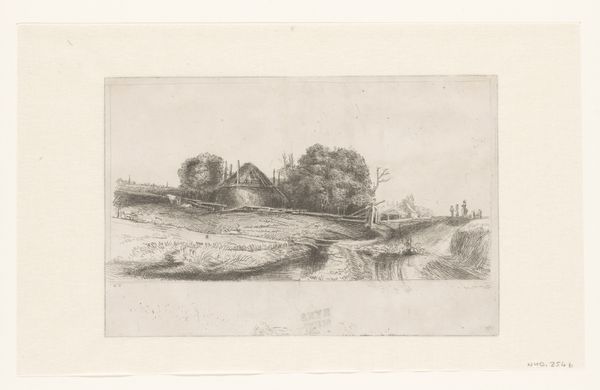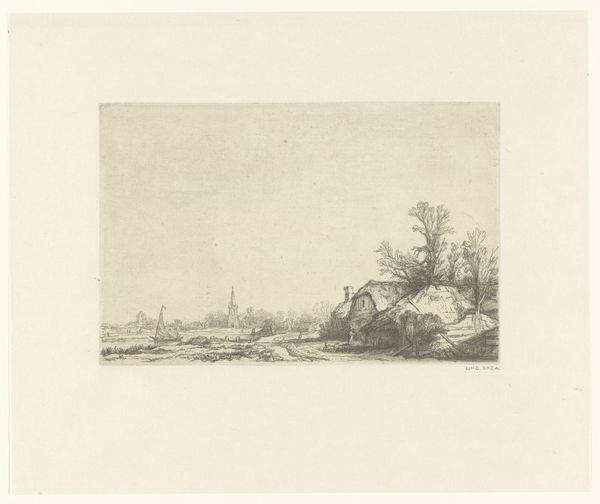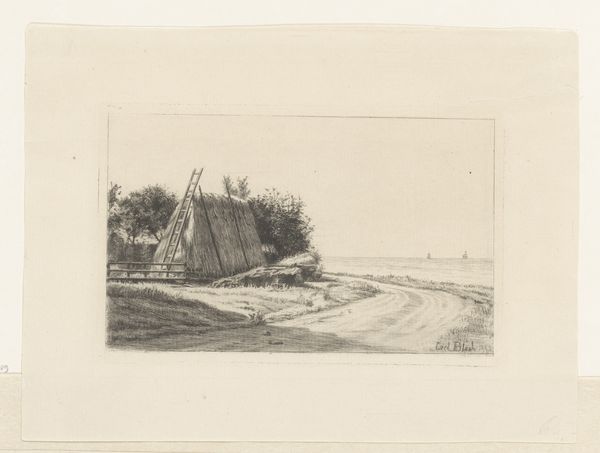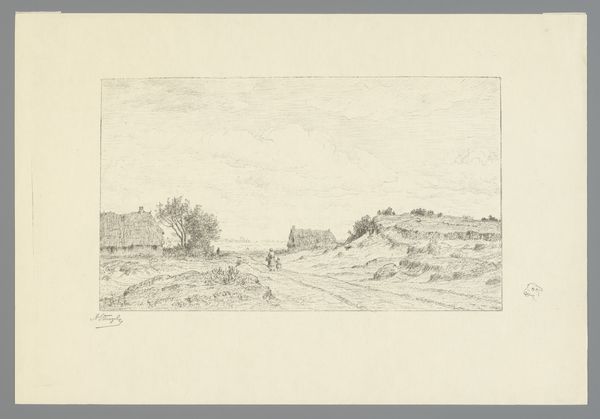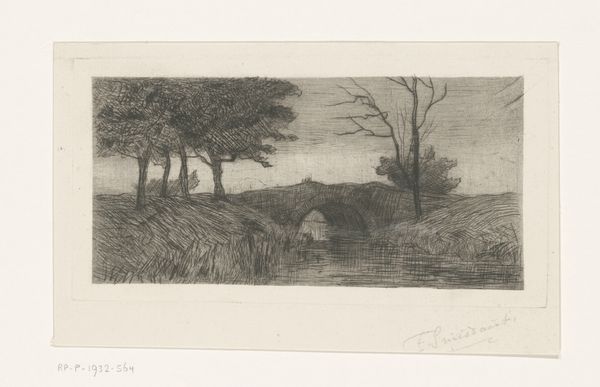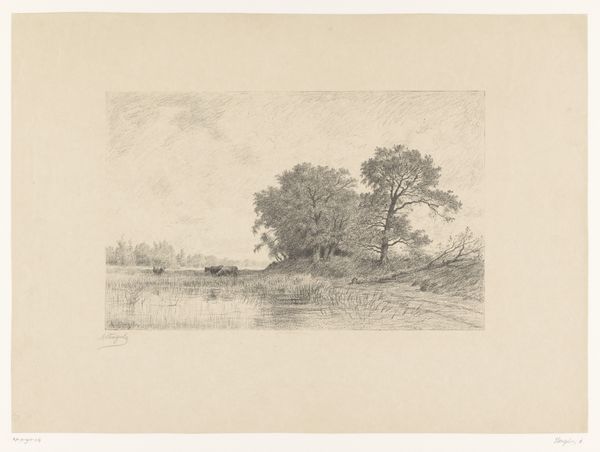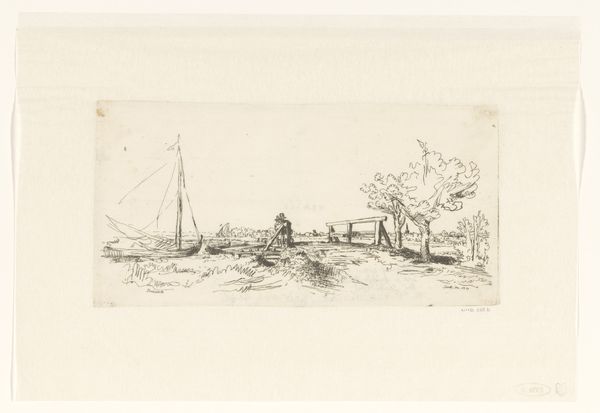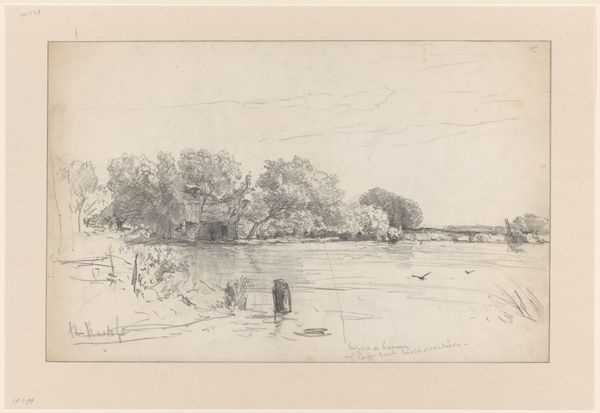
drawing, pencil
#
drawing
#
landscape
#
pencil
#
realism
Dimensions: height 235 mm, width 345 mm
Copyright: Rijks Museum: Open Domain
Curator: Let’s take a look at Fredrik Theodorus Grabijn’s “Duinlandschap met wandelaar,” or “Dune Landscape with Walker.” It’s a pencil drawing dating from sometime between 1871 and 1937, currently held at the Rijksmuseum. Editor: It’s very still, quiet. A hazy sort of light and the delicate graphite work contribute to an atmosphere of peaceful solitude, a solitary figure captured amidst a tranquil scene of land meeting sky. Curator: I think that quietude is crucial. Think about the role of drawing, the artist using graphite, a relatively inexpensive and accessible material to capture the subtleties of light and atmosphere in the Dutch landscape. Editor: It’s not just the graphite but also the artist's ability to convey volume through varying densities of line. Observe how the tree groupings gain mass. This suggests the hand is skilled, even as the medium stays deliberately humble. What do we make of this artistic choice in rendering the Dutch landscape? Curator: Well, the Dutch landscape tradition, even in painting, often intertwined with national identity and emerging notions of working-class identity. The accessibility of drawing—of depicting that landscape without opulent color—allows, maybe even demands a certain closeness to it. Think about accessibility and labor in creating the artwork. Editor: That's fascinating when thinking about this single figure—almost an observer—existing on the periphery, but undeniably rooted in the locale, her place defined by work and belonging. There are few emotional displays within the composition. Curator: Precisely. It avoids romanticizing labor. This feels far more akin to a documentary impulse that we see mirrored in artistic collectives growing throughout that period, challenging dominant aesthetic modes. Editor: Indeed, and one finds resonance between such minimalist form and subtle content. It makes me reconsider what I initially viewed as the art's muted aesthetic impact! Curator: For me, Grabijn’s decision emphasizes that close, careful attention reveals greater social meanings hidden beneath its humble simplicity. Editor: Thank you; with that new social and artistic understanding, my experience and deeper awareness of Grabijn's delicate "Duinlandschap met wandelaar" changed from simply admiring craft to realizing complexity in it.
Comments
No comments
Be the first to comment and join the conversation on the ultimate creative platform.
